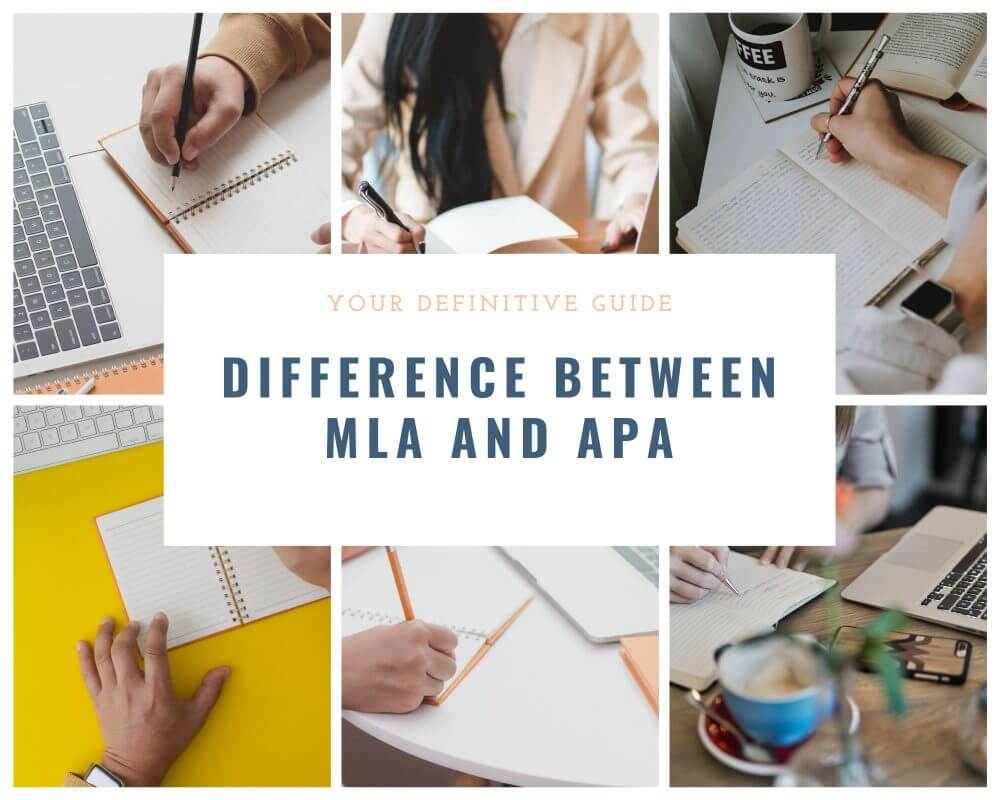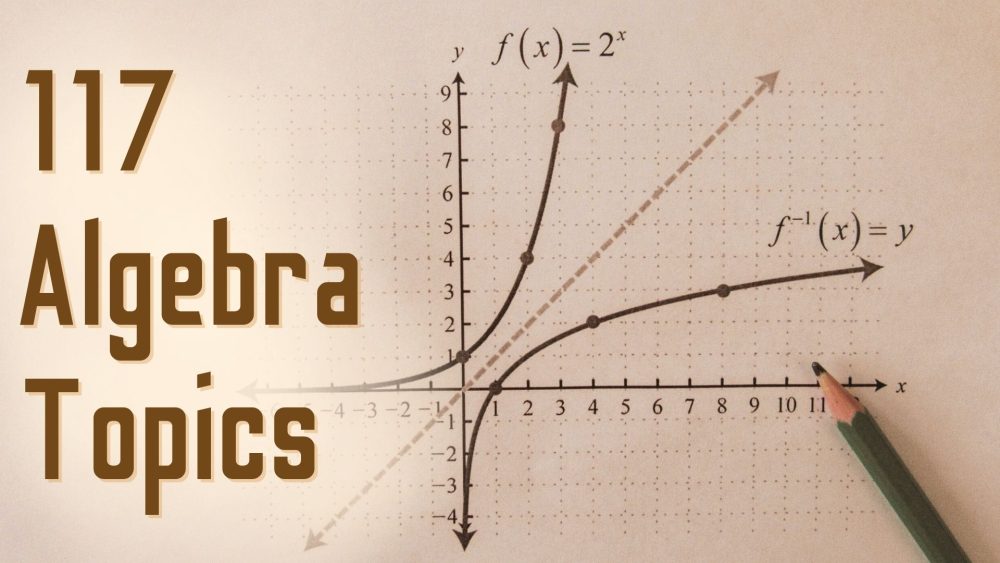When working on academic assignments, you can only achieve high grades by following all the instructions, especially the formatting styles. The two most common methods of formatting are APA (American Psychological Association (APA) and Modern Language Association (MLA). APA and MLA are types of formatting for organizing every part of your academic papers, from the title to references. So, how well do you understand the difference between MLA and APA?
In the social sciences and education fields, APA (American Psychological Association) citation style is the most applied method. However, if you are pursuing a course in humanities, the most recommended formatting method is the Modern Language Association (MLA). Here is a comprehensive look at the difference between APA and MLA.
APA vs MLA Differences in Title Page Format and Heading
How is APA different from MLA? Well, the difference starts from the beginning, the title page. See the examples of both styles below.
- Title Page in APA
In APA, you need a separate cover page that lists the title of the paper, students’ full name, name of student, and college. Depending on your institution, you might also need to include the department. Note that all the details are centered and must be double spaced. See the example below:
- MLA Heading
Unlike in APA, MLA formatting style does not require a title page. Instead, what you require is a four-line heading on the first page of your paper. However, you need to pay close attention to the assignment instructions because your lecturer might ask you to include a title page.
The heading in MLA is left-aligned and must be double-spaced. The details that must be added include the student’s full name, the instructor’s name, the course title or number, and the date of submission. Immediately below the heading, you enter the assignment’s title, which should be centered. See the demonstration below:
One of the key similarities between MLA and APA when it comes to the title page is that they both have a running head. However, the running head in MLA is right-aligned and shows the student’s last name and the page number. In APA, the running head is left-aligned and contains the title of the paper that the student is working on. Then, the page number is right-aligned. Also, the APA title page contains the actual words, “Running head” before the title.
MLA versus APA In-Text Citations
Both APA and MLA use parenthesis citations for in-text citations. However, a closer look reveals they are slightly different. Have a look:
-
In APA in-text citation, you are required to use the author’s last name and year of publication. Note that if you want to paraphrase, you are required to include page numbers.
-
In MLA in-text citation, you are required to use the last name and page number.
When using the two styles, the rules about shortening citations using “et al” also differ. Check the APA vs APA in-text citations table below for further demonstrations.
|
No. of authors |
APA |
MLA |
|
1 author |
(John, 2018, p. 29) |
(John 23) |
|
2 authors |
(John & Henry, 2019, p. 65) |
(John and Henry 23) |
|
3-5 authors |
(John, Henry, Eva, & Perry, 2019, p. 65) In subsequent citations: (John et al., 2019, p. 65) |
(John et al. 23) |
|
6 and more authors |
(John et al., 2019, p. 65) |
(John et al 65) |
The Difference between APA and MLA Tables
The main purpose of using tables and figures in academic work is to help readers to understand better the information presented in the documents. However, how they are presented in MLA differs slightly from the way you should do them in an APA paper.
-
APA Tables
To format a table in APA, you are requires to use follow rules:
- The table number, which should be in plain text above the table
- Provide a brief title.
- Use no vertical lines.
- Provide notes below the table.
See the example of an APA formatted table below:
-
MLA Tables
If you need to use a table in your MLA assignment, here is how to do it.
- Use text to refer to the table and corresponding numeral.
- Place the table next to the text associated with it.
- Make sure the table is aligned flush left to the page margin.
- Label your table.
- Provide a caption for the table.
See the example of a table formatted in MLA:
APA vs MLA Reference Page Differences
When writing a paper either in MLA or APA styles, you should list all the details of the cited resources on a different page. In the MLA formatting style, this is referred to as works cited page or references list if working on APA assignments.
In both styles, the source entries are done at the end of the paper and in a separate page. Furthermore, the used sources in both cases are listed in alphabetical order and according to the author’s last name.
One notable difference between APA and MLA references list is indenting. When writing an MLA’s works cited page, the second line is indented five spaces. APA’s references list also requires you to indent every source’s second line, but the indenting space is ½-inch. See the examples of the key differences and similarities between MLA and APA references pages.
- APA’s References List
|
Book entry |
Rothenberg, P. (2008). Race, class, and gender in the United States (3rd Ed.). New York, NY: Worth Publishers. |
|
Journal article |
Dolby, N. (2009, May 20). Research in youth culture and policy: Current conditions and future directions. Social Work and Society: The International Online-Only Journal 6(2). Retrieved from http:// www.socwork.net/sws/article/view/60/362 |
|
Website resource |
Coates, T. (2013, May 15). What we mean when we say ‘race is a social construct’ Retrieved March 7, 2015, from http://www.theatlantic.com/national/archive/2013/05/w hat-we-mean-when-we-say-race-is-a-social- construct/275872/ |
- MLA’s Works Cited Page
|
Book entry |
Rothenberg, Paula S. Race, Class, and Gender in the United States. 3rd Ed. New York: Worth Publishers, 2008. Print. |
|
Journal article |
Dolby, Nadine. “Research in Youth Culture and Policy: Current Conditions and Future Directions.” Social Work and Society: The International Online-Only Journal 6.2 (2008): n. pag. Web. 20 May 2009. |
|
Website resource |
Coates, Ta-nehisi. “What We Mean When We Say ‘Race Is a Social Construct’” The Atlantic. Atlantic Media Company, 15 May 2013. Web. 07 Mar. 2015. |
APA 6 vs APA 7: a Closer Look
Now that you know the difference between MLA and APA citations, we will take a deeper look at APA guideline editions. You might have noted that some teachers are specific when they give assignment prompts. For example, your professor might ask you to write an essay using APA version 6 or research paper following APA version 7 guidelines. So, what is the difference between the two?
|
Topic |
APA 6 (old guideline) |
APA 7 (new guideline) |
|
In-text citation with three or more authors. |
If a source has three to five authors, the first citation must include all of them, while the subsequent one uses et al. However, all sources that have more than six authors simply use et al in the citations. |
In the 7th edition, all citations that have more than three sources simply use et al |
|
Direct quotation for audio visual sources. |
This version APA of does not provide guidelines on citing such a source. |
To quote from an audiovisual source, you need to include a timestamp marking at the start of the quoted material as opposed to a page number. |
|
Dates that are listed in secondary resources. |
When using secondary source citation, students are not required to include the dates from the original sources. |
When using secondary source citations, you have to include the original source’s dates. |
|
Referencing format when the author and publisher are the same. |
Use the word “author” as the publisher’s name in the reference entry. |
Exclude the publisher in the reference entry. |
|
Issue number when referencing journals. |
If the journal is paginated separately using the issue, include the issue number. |
You should include the issue number for every periodical that comes with issue numbers. |
|
The location of the publisher. |
Include the publisher’s location, such as city and state, prior to the publisher’s name. |
After the publisher’s name on a reference, do not include the location. |
|
URL retrieval info in your references |
When adding URL for retrieval info, you have to include the phrase, “Retrieved from” |
In the 7th edition, you do not have to use the phrases “Retrieved from” or “Accessed from” before providing the URL for retrieving info. You should use the phrases, such as “retrieved from” only when the retrieval date is needed |
|
Paper title length |
The title length is recommended to be no more than 12 words |
There is no limit for title length |
|
Space immediately after a punctuation |
After every punctuation, you are required to space twice. |
After a period or other punctuations that close a sentence, you should only add one space. |
When writing your assignments, one of the things that you must get right is how to cite sources and the essay paper format. However, we must agree that understanding MLA vs APA citation is not an easy task, especially when you have assignments to work on immediately. To get it right on APA and MLA, you should consider seeking writing help.
Writing assistance is provided by experts who have been in the industry for some time and wield ample experience to help you craft A-rated papers. Furthermore, they understand the difference between MLA and APA styles, making it possible for you to craft your essays or term papers professionally for top grades.





